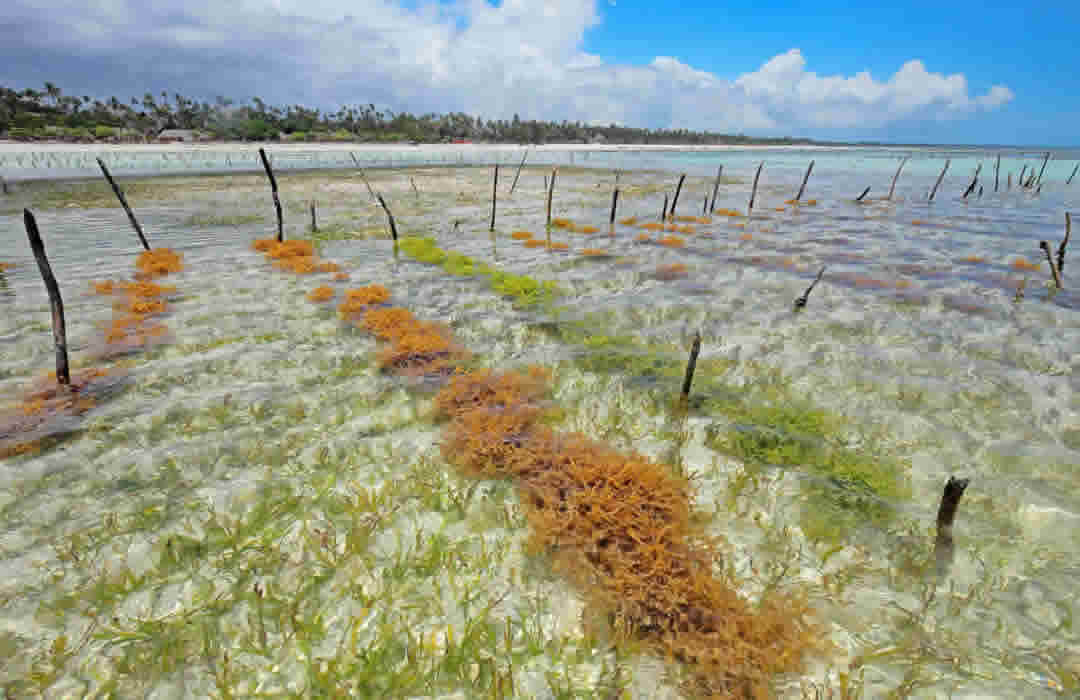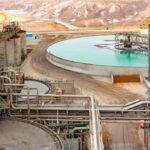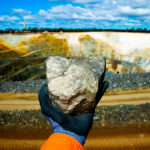Seaweed panorama
For several months, the team at Projects RH have been working with management consultant Kalvin Smith based near the University of Newcastle (Australia). Kalvin has been engaging with Projects RH for some six months and has convinced us of the merit of wanting to see seaweed given a priority in the carbon credits and ecological funding received from government. He has particular passion for his local area and the damage that has been done to it by the farming of oysters.
Kalvin has lived in Australia for over 25 years -having grown up in London- but retaining close roots to his ancestral home in Barbados.[1] His and his family’s connections with Barbados have provided us with a focus of also achieving the benefits of seaweed for that community. [2]
Seaweed grows off the Australian and Barbados coasts and comes ashore and can be collected or harvested at sea. In some cases, this seaweed has a direct impact on its local environment and can bring rehabilitation to such areas as the coast of NSW which have been damaged by large oyster leases persisting over many decades.
International Research demonstrates that Seaweed can help climate mitigation via
- Seaweed products (CO2 substitution effect)
- Seaweed biochar
- Biomass sinking
- Restoration / creation of habitat
At Projects RH we see seaweed provides
- an opportunity for carbon credits, nutrient credits and biodiversity credits[3]
- an ability to restore the natural environment where it has been damaged
- a renewable raw material which can be turned into
- protein[4]
- animal feed
- plastics
- biofuel
- human nutrition
- A seaweed industry would: contribute to global research priorities in (i) Resources, (ii) Energy, and (iii) Advance manufacturing.
Seaweeds Contribution

Finding balance …
having grown up in Sydney and spent my youth holidaying in northern NSW the site of seaweed on the beaches was common but less than welcome. In those days I did not appreciate the wonders and rapid growth seaweed nor that it contained many of the basics for sustaining human and animal existence and that it could be worked to produce many of the things we need for modern life without producing damage to the environment.
Last year an entrepreneur, Kalvin Smith, came to projects RH with the proposition that we should support the commercial growth of seaweed and/or its harvest in the area around Newcastle in NSW which starts about 100 miles, using the old term, north of the center of Sydney. Kalvin came well-armed with documents prepared by the Australian CSIRO (Commonwealth Scientific And Industrial Research Organization) in recent work undertaken at the Sydney University of Technology. He is also able to supply information suggesting that the government of NSW was willing to finance projects which would restore the environment, provide local jobs, and meet United Nations sustainability principles.
In turn Kalvin allowed to provide information that these topics have been addressed in Barbados by research funded and supervised by the UK government.
As with many environmental and community projects around the world, international aid organizations and government scientific bodies are willing to research the theory but are not funded to implement the findings. What is needed is for the private sector to understand the opportunity and evaluate its commerciality. Naturally of its commercial the private sector should undertake it if this is the case the key then is to establish the case and demonstrate the certainty of revenue. Today Kalvin Smith is working with Projects RH to do just that. Kalvin with our support is applying for grants provided by the state of NSW and the government of Barbados.
… and opportunity
Globally people are seeking to live more sustainably and to have a lower impact on the environment and hopefully in the medium term enabling the world to live in a more sustainable way for centuries to come.
Seaweed offers the opportunity to develop industries particularly in many coastal countries which do not have low-cost imports which can be processed into high-value outputs. Seaweed produces protein, energy, vitamin C and even the raw material for plastics.
Australia sees seaweed as providing an opportunity for a blue carbon strategy. The NSW government’s proposed North NSW coastal rehabilitation would result in the sequestration and storage of some 10 million tons of CO2 per annum which is equivalent of the CO2 produced by 500,000 Australians.[5]
Seaweed immediate opportunity
One of Calvin’s immediate concerns is that decades of oyster farm leasing, and intense aquaculture, has led to a marine environment which is less than pristine. The level of pollution as such that oysters grown in this area today cannot be sold for human or even animal consumption due to the high level of toxicity contained within them. What he has been able to demonstrate is that growing sustainable and harvestable seaweed will ensure that the damage which has been done can at least be neutralized.
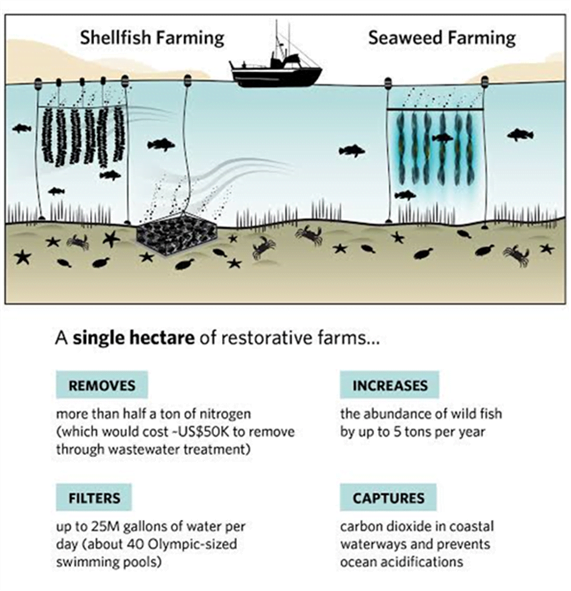
The Impact of a seaweed industry.
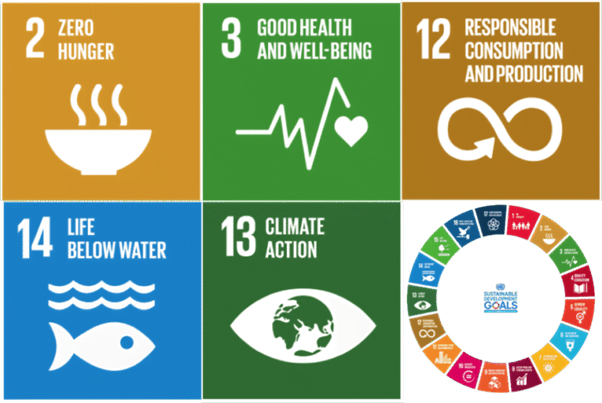
Seaweed is up for grabs
On first glance, seaweed seems a great natural solution to so many problems. It is one which can be harvested from just the discarded captured by waves or grown deliberately to have a desired impact.
At Projects RH we do not have all the necessary information to form a view or to prepare materials so that appropriately registered advisers can invite people to invest.
We will continue to pursue this opportunity and don’t see this will be our last article on seaweed.
We thank Mr. Kalvin Smith, first for his enthusiasm and second for bringing this to our attention.

By Paul Raftery – CEO, Projects RH, based in Sydney
If you have any questions please call +61 418 486 015.
————————————
[1] “World Bank Group. 2016. Seaweed Aquaculture for Food Security, Income Generation and Environmental Health in Tropical Developing Countries.
[2] University of Southampton. “Stinky seaweed blooms: Turning an ecological risk into an opportunity”, 2023.
[3] Neves, L.; “Seaweed Cultivation as a climate positive solution”, SIG Seaweed Conference, Trondheim, Norway, 26 November 2021, Hosted by SINTEF & NTNU, The Research Council of Norway. 2021.
[4] “Seaweed is a good source of protein. It contains all the essential amino acids that your body needs to build muscles, enzymes, and hormones. Seaweed also contains vitamins and minerals such as vitamin A (beta-carotene), vitamin C, calcium, iron, and iodine. Seaweeds also contain antioxidants that help fight free radicals in the body that cause damage to cells and DNA over time. Seaweeds have been used as food sources for centuries because they are easy to collect from coastal waters around the world; however, they have recently become popular among health enthusiasts due to their health benefits including those mentioned above!” (Source: Copy.ai, “Commercial Opportunities for seaweed”, 2023.)
[5] Hutchinson, S.; “NSW eyes swamps, wetlands and seaweed forests for carbon credits”, -The Australian Financial Review, 9/1/2022
[6] All infographic were supplied by Mr Kalvin Smith.

